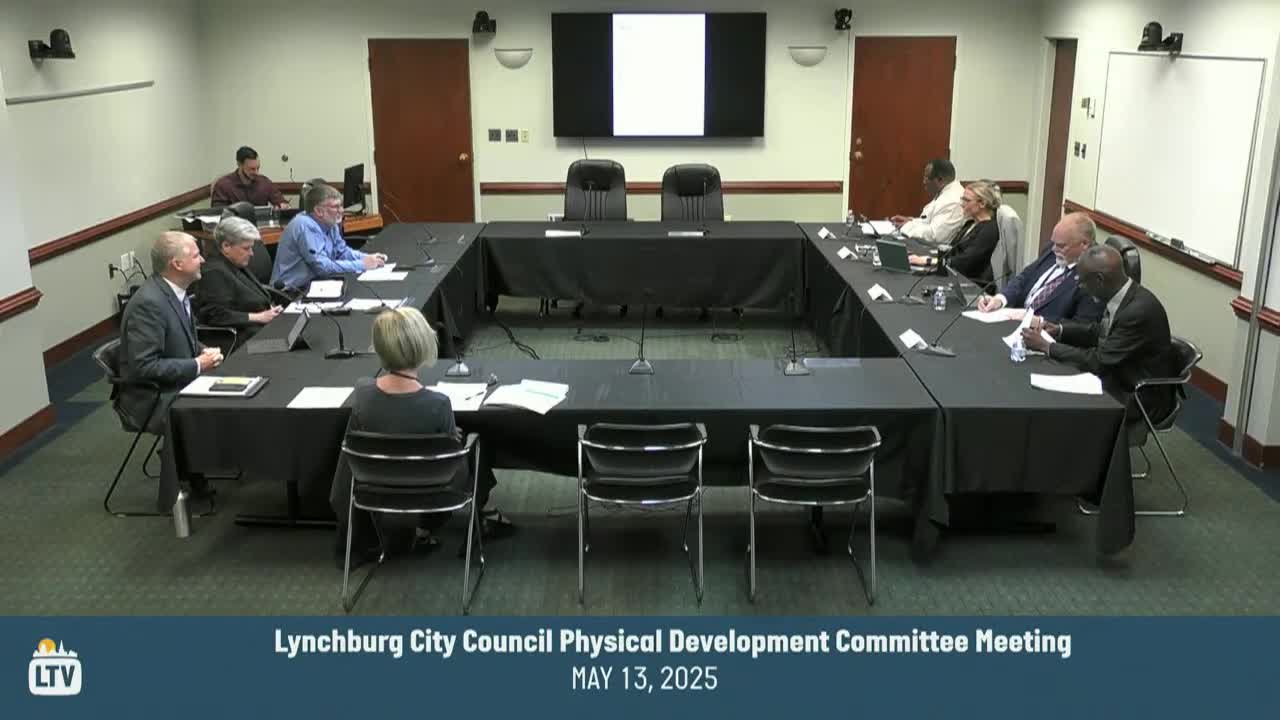Lynchburg staff describe ‘‘property toolkit’’ and derelict-building program results
May 14, 2025 | Lynchburg, Campbell, Virginia
This article was created by AI summarizing key points discussed. AI makes mistakes, so for full details and context, please refer to the video of the full meeting. Please report any errors so we can fix them. Report an error »

City staff on the Lynchburg City Council work session presented updates on the city’s property toolkit and its derelict-building program, telling council members the effort is intended to remove blighted conditions, beautify neighborhoods and increase property values while creating housing opportunities. "The goal overall is rehabilitation," a presenter said.
Staff gave specific examples of recent rehabilitations and sales to illustrate the program’s results. Staff said a house at 2005 Park Avenue rose in assessed value after rehabilitation, and a property on Dudley Street that had been condemned for at least a decade sold in April for $255,000 after work through the derelict program. Other examples included properties at 2110 Filbert Street and 1640 Blackburn; staff said the program has enticed both owners and buyers to rehabilitate long-condemned houses.
The presentation tied the derelict program to the city’s 2022 derelict-building ordinance and described the toolkit as a bundle of efforts: derelict-property intervention, a vacant-property registration program, targeted demolition funds and incentives to move properties into private hands for rehab. Staff said the city has used council-approved additional funding for demolition work and reported that 19 properties entered the derelict program in April, bringing the total to 71 properties currently in the program.
Council members pressed staff on timelines and public access to project plans and program data. One council member asked whether site plans or visuals are readily available; staff replied that site plans are available on the city’s GIS and that staff could provide additional visual summaries on request. Another member asked whether the derelict program is limited to rehabilitation rather than wholesale demolition; staff said rehabilitation is the primary focus of this toolkit and that demolition is a separate, more complex process used only when a property cannot be saved.
Members and residents raised affordability concerns for long-term homeowners who cannot afford renovations. Staff noted an existing real-estate rehab program that allows homeowners to freeze assessed value while completing renovations and said the broader vision for the toolkit includes enabling resources through nonprofits and a housing trust to remove barriers such as multiple heirs and title problems that complicate redevelopment.
Staff closed by describing the program as a multi-part effort intended to make it easier for owners or purchasers to rehabilitate long-term blighted housing, and offered to provide council members with additional visual dashboards or summaries to track properties and opportunities.
Ending: Staff moved on to the next agenda item after answering members’ questions and offering follow-up materials.
Staff gave specific examples of recent rehabilitations and sales to illustrate the program’s results. Staff said a house at 2005 Park Avenue rose in assessed value after rehabilitation, and a property on Dudley Street that had been condemned for at least a decade sold in April for $255,000 after work through the derelict program. Other examples included properties at 2110 Filbert Street and 1640 Blackburn; staff said the program has enticed both owners and buyers to rehabilitate long-condemned houses.
The presentation tied the derelict program to the city’s 2022 derelict-building ordinance and described the toolkit as a bundle of efforts: derelict-property intervention, a vacant-property registration program, targeted demolition funds and incentives to move properties into private hands for rehab. Staff said the city has used council-approved additional funding for demolition work and reported that 19 properties entered the derelict program in April, bringing the total to 71 properties currently in the program.
Council members pressed staff on timelines and public access to project plans and program data. One council member asked whether site plans or visuals are readily available; staff replied that site plans are available on the city’s GIS and that staff could provide additional visual summaries on request. Another member asked whether the derelict program is limited to rehabilitation rather than wholesale demolition; staff said rehabilitation is the primary focus of this toolkit and that demolition is a separate, more complex process used only when a property cannot be saved.
Members and residents raised affordability concerns for long-term homeowners who cannot afford renovations. Staff noted an existing real-estate rehab program that allows homeowners to freeze assessed value while completing renovations and said the broader vision for the toolkit includes enabling resources through nonprofits and a housing trust to remove barriers such as multiple heirs and title problems that complicate redevelopment.
Staff closed by describing the program as a multi-part effort intended to make it easier for owners or purchasers to rehabilitate long-term blighted housing, and offered to provide council members with additional visual dashboards or summaries to track properties and opportunities.
Ending: Staff moved on to the next agenda item after answering members’ questions and offering follow-up materials.
View full meeting
This article is based on a recent meeting—watch the full video and explore the complete transcript for deeper insights into the discussion.
View full meeting
